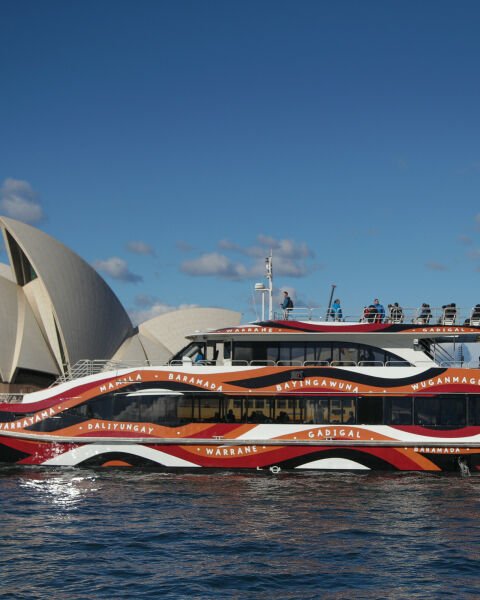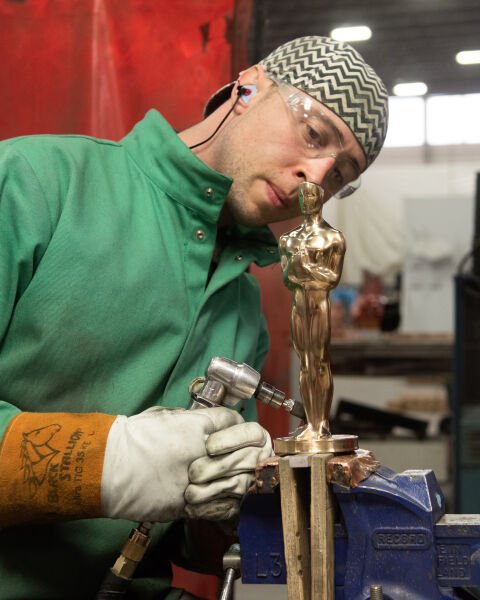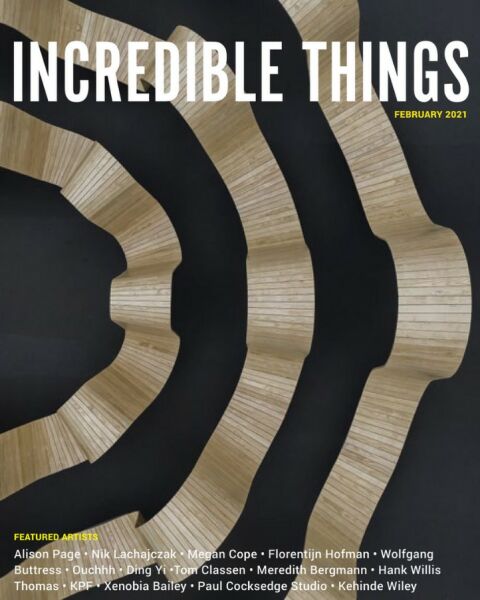Izabela Pluta
Exploring Displacement Through Material: Izabela Pluta's Artistic Journey at UAP Residency

Izabela Pluta’s residency with UAP offered a rare glimpse into her evolving artistic practice, where she continues to explore themes of displacement, memory, and materiality. Known for blending photography, sculpture, and collage, Pluta’s work challenges the permanence of historical narratives, encouraging viewers to question the stability of place and memory. During her residency, Pluta engaged in experimental techniques, including collecting remnants from the foundry floor to incorporate into her creations. This process aligned perfectly with her ongoing fascination with material transformation and the impact of environmental forces on her work.

Your works speak to the migrant experience of displacement, reliving the experience of displacement in your body during the process of creating the work. How do you hope viewers may feel when they experience your works?
Izabela Pluta (IP) My work is deeply rooted in exploring location, photographic materiality, and historical narratives, aiming to capture the fluidity and uncertainty of the migrant experience. Through techniques like collage, where fragments are reassembled to form new narratives, I try to evoke a sense of disorientation and reconfiguration in the viewer—of jolting their initial reading or first impression of what they are seeing…. so as to, for them, to question what it is, and more importantly—why it is. The instability and change that characterises my work aims to mirror the (or more so my own) personal experience of displacement, inviting viewers to engage with ideas about the impermanence and mutability of place and memory. I try and consider this through material choice, and often also through discrepancies of materiality—of working with different photo forms, different paper, sizes, constellations that aren’t ‘supposed’ to belong together in traditional uses of the mediums. I hope that, through this, viewers might feel a resonance with the transient nature of existence, prompting a deeper reflection on their own sense of belonging.
You play in the space between archive and reimagining. Can you tell us more about your understanding of absolute truths? Are there any absolute truths in the works you create?
(IP) The notion of absolute truth is something I continuously am challenged by in my practice. Most recently I’ve been obsessed with thinking about the constant material flux of objects—for example, metals and their erosion due to weathering, versus the erosion of rocks by water, or more specifically, costal morphology—I’ve been exploring concepts like use-wear and patina. I confront the idea that history and memory are fixed. My work, often rooted in historical narratives and found imagery, aims to disrupt the linear and authoritative nature of archives—and photographs. The layering, splicing, and fragmentation in my tapestries and photographic collages aims to question the reliability of recorded history, suggesting that truth is always in flux, shaped by context, perspective, and time. I guess I’m constantly grappling with what I don’t know—or recall—from my own past. The absolute truth, I might say, is that nothing is fixed, or constant—or accurate in the way that we might assume it to be.
There are requirements across most city councils for public art to be permanent. Your works often play to deeply ephemeral moments, with an implicit temporality. How does it sit with you to consider an artwork of yours as a fixed installation in the public realm for 100 years or more?
(IP) The idea of permanence in public art is intriguing, especially when juxtaposed with the ephemeral nature of my broader practice. Working with photography for most of my career by protecting pictures from decay and working with ‘archival’ considerations has always been at the fore of considerations when deciding on what paper, substrate, or material to use. My work often engages with materials and processes that embody change, such as light-sensitive photo paper or the examination of patina on sculptures. The challenge of creating something permanent in the public realm would require me to consider how to embed temporality within the work which is a super exciting notion—perhaps through materials that age or change over time, reflecting the same principles of flux and transformation that are central to my practice. It would be about finding a balance between enduring presence and the inevitable shifts that occur in both material and meaning over time.


Where in the public realm do you feel your works would most resonate? Do you have an ideal site for the incorporation of an Izabela Pluta?
(IP) My work resonates most in spaces that themselves embody a sense of history, change, and cultural layering. Places where the environment or architecture carries traces of a kind of complex past is being grappled with, or where natural forces are visibly at play, would be ideal sites for my work. For instance, coastal areas where erosion and weathering are evident, or urban spaces that have undergone significant transformation, could serve as interesting contextual backdrops. These environments would not only complement the themes of impermanence and material flux in my work but also amplify the dialogue between the artwork and its surroundings.
What aspect of creating art for the public realm excites you the most? How do you think making public artworks could extend your practice?
(IP) Creating art for the public realm excites me because it allows for a direct and dynamic interaction between the work and its audience; those who may encounter it unexpectedly in their daily lives. This context opens new possibilities for how my work can engage with and respond to its surroundings, whether through the physicality of a site or the cultural and historical narratives embedded within it. Making public artworks would stretch my practice by challenging me to think more about scale, durability, and the integration of my work into environments where it must coexist with natural and human elements.
The way you understand photography is through the lens of your sculptural practice. How do you think having a bodily and experiential awareness changes the way you capture images?
(IP) Understanding photography through a sculptural lens allows me to approach image-making with a heightened sensitivity to materiality and space. My process often involves physical engagement with the environment, such as the methodical documentation of objects or the tactile manipulation of photographic materials. This bodily awareness informs how I capture images, emphasising the relationship between the body, the camera, and the subject. Over the past few years, I’ve been scuba diving, not just to experience the locations that are key to my work but to understand how being submerged in water makes me hyper-aware of my own body in relation to the world. There’s a discomfort there—sometimes anxiety—from not quite knowing my orientation within that vast expanse of water. In the studio, I treat photographs like objects, cutting, layering, and reconfiguring them to blur the lines between flat images and three-dimensional space. This approach turns photography from just a recording tool into something that interacts with and reflects the physical world in a more dynamic and embodied way.

Your iconic bronze cast hands holding the sculptural elements of your works is a theme across many pieces. There is an intimacy in having the hand that crafted so literally represented in your work. How did you come to this outcome? Do you anticipate we will see your hand peppered throughout future Pluta works?
(IP) The use of bronze cast hands in my work is a natural extension of my exploration into the materiality and tactility of the image. By casting my own hands, I wanted to make the act of ‘making’ visible, intertwining the physicality of the maker with the object itself. This connection between hand and material I felt enabled a kind of intimate dialogue between the process of making and the resulting work. The hands, in their sculptural form, hold and support elements within the work—in their first iteration they were used as kind of ‘supports’ which held up the physical and ‘emotional’ weight of the six-meter vertical collage taking the shape of a surface that formed a sail-like body, anchored by these sculptural components. Moving forward, I anticipate that this type of motif might continue to surface in my practice as a way to further explore the intersections of presence, material, and the passage of time—and my place within all of that!
Throughout your residency with UAP, you explored physical collage, collecting items from around the foundry to create with. What drew you to working in this hyper-local manner?
(IP) Working in a hyper-local manner at the foundry was incredible as an intense period where I could play and test—to focus, but also to iterate the different approaches to making that had brought me here. The foundry itself became a site of exploration, where the act of collecting materials from the workshop—including remnants of leaks from previous metal pours, or random timbers, sand or plastics which has been used to construct moulds— allowed for a deeper engagement with the physical space of the workshop.
It also made me consider what it meant to be working in such a space—the processes that take shape there, the mechanics of how things are made, tectonics, materiality, melting temperatures, patina — all the bits and pieces that occur in an elaborate dance, made possible with incredible technicians who know the craft, and can speak to its undertaking! My approach of ‘gleaning’ materials which have served their former purpose aligns with my broader practice, where I often draw from found and photographed sources, whether they be oceanic cartography or ephemera from historical or personal archives. By engaging directly with the foundry's materials for aspects of the work that I was making during the residency, I was able to create tests that are both rooted in the immediacy of the location and reflective of broader themes of orientation, memory, and a poetic kind of scavenging that resonates with the philosophical terrain of the relationships between place, nostalgia, and diaspora.
What was the focus of your explorations during the residency? Did the residency scratch an itch for you?
(IP) The residency at UAP allowed me to delve deeper into the material and sculptural aspects of my practice, particularly in relation to the processes of casting and collage, and using materials that speak to the physical toll of environmental forces. It’s something that I’ve wanted to do for some time! That space and time to just play, and to consolidate my thinking around certain objects and images that I had collected in my studio. For example, a navigational buoy that I found wedged within volcanic rock forms, washed in from the Pacific Ocean at the cusp of the East China Sea, or elements of dead coral, flotsam, and debris found in the ocean over the years. For me these ‘materials’ are for thinking about how to make work that might embody the remnants of marine environments that have been altered by natural decay and human impact. These materials, once living or integral parts of the ocean's ecosystem, now serve as tactile records of environmental change. I’ve had elements of these in my studio for years — , and collecting coastal debris from sites where it’s ethically possible to do.I wanted to use them en masse — to mould them in different ways, to collage them in three-dimensional space, to create a narrative of ecological disruption, to think about the transformation within the ocean's depths. I wanted to see how I could in a way ‘materialise’ the cyclical process of making and unmaking corporeally. I was focused on exploring how these pattern making processes could intersect with my ongoing investigations using imagery, and collage. The residency indeed scratched an itch, as it provided a rare opportunity to work closely with skilled artisans, experimenting with new methods of creating and manipulating forms. I was able to assemble, cast and recast in wax to make small prototypes, reliefs, and see how this could operate in scaled-up situations via 3D scanning, prototyping and visualisations. I was also excited to be able realise a few small bronze aluminium sculptures that teased out these loose tangents and ideas!
What were some unexpected learnings that you discovered on the foundry floor?
(IP) One of the unexpected learnings on the foundry floor was the meticulously orchestrated sequence, akin to a kind of choreography, where each step — from pattern creation to the final pour—is methodically layered to transform a detailed blueprint into a lasting metal. I loved learning about how this particular method, as opposed to lost wax, is imbued with a particular material and process-based philosophy that observes making something which will inevitably be destroyed: the original wax positive. It feels very poetic, and I think that it has really stuck with me—the way that this process is imbued with a sense of loss and transformation. As sand shapes and then releases the form, it echoes the cycles of making and unmaking, always haunted by the impermanence of its origins. Observing and participating in this meticulous production deepened my appreciation for the material transformations that occur during casting. I also discovered how the foundry environment itself — its tools, textures, and even its detritus — could become integral to my artistic process. This hyper-local engagement with the foundry’s physicality led me to think more about how industrial processes can be woven into the fabric of my work.
How did working with the UAP team during the residency expand and affect your thinking?
(IP) Working with the UAP team was instrumental in expanding my thinking around the potential of material and process. Their expertise in large-scale fabrication and their collaborative approach opened up new possibilities for how I could approach my work. This residency provided a space to experiment with ideas that were previously abstract, turning them into tangible forms! I have many tests, prototypes to keep working from, and adding to from here. The exchange of knowledge and skills with the UAP team not only enhanced my technical abilities but also influenced how I might conceptualise the relationship between material, scale, and space in my work.



Image Credit: Rachel See courtesy of UAP | Urban Art Projects
#相关文章

Sydney Harbour ferry features traditional wave designs that recognise local Aboriginal clans
New South Wales First Nations artist Warwick Keen has just completed the biggest artwork of his life and his canvas is a Sydney Harbour ferry.

Finding the Soul of Public Art in the 21st century
Every one of us has endured to some degree during this pandemic. Many of us at the Rock Tavern shop has struggled through the contraction of the virus and prevailed.

Incredible Things Issue One
Looking back at some the incredible things we have delivered recently in Australia, China, the United States and the Middle East.


